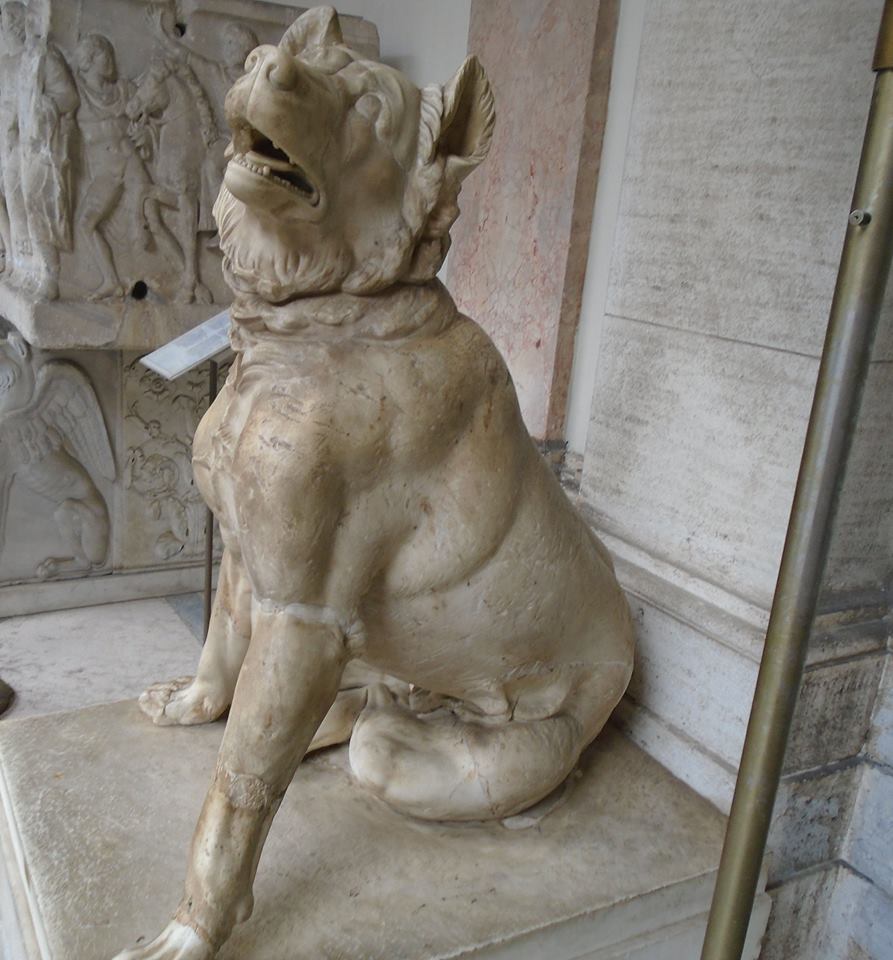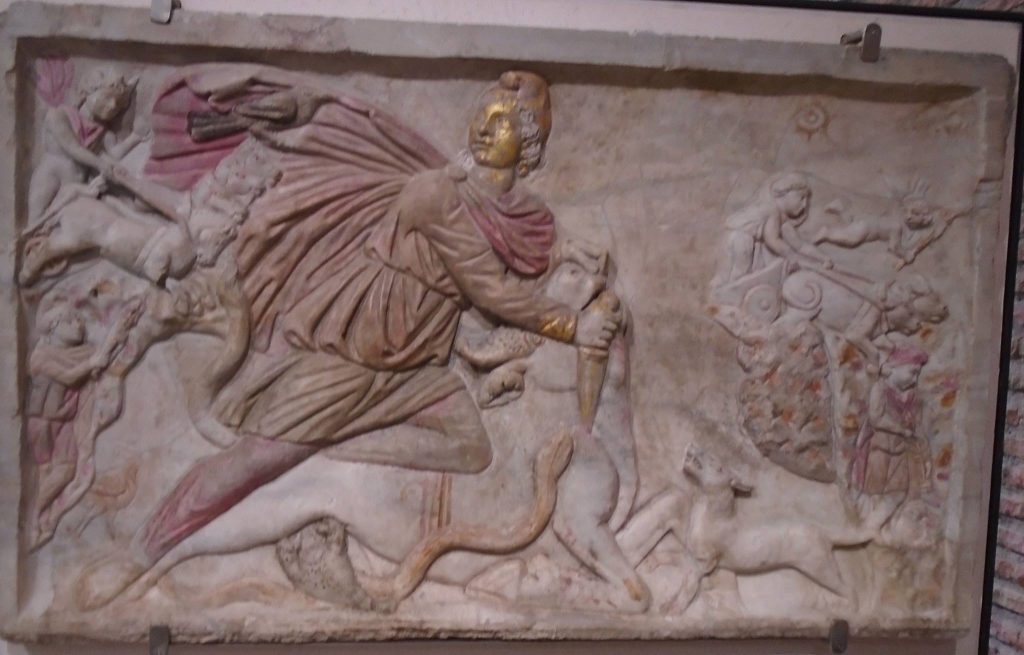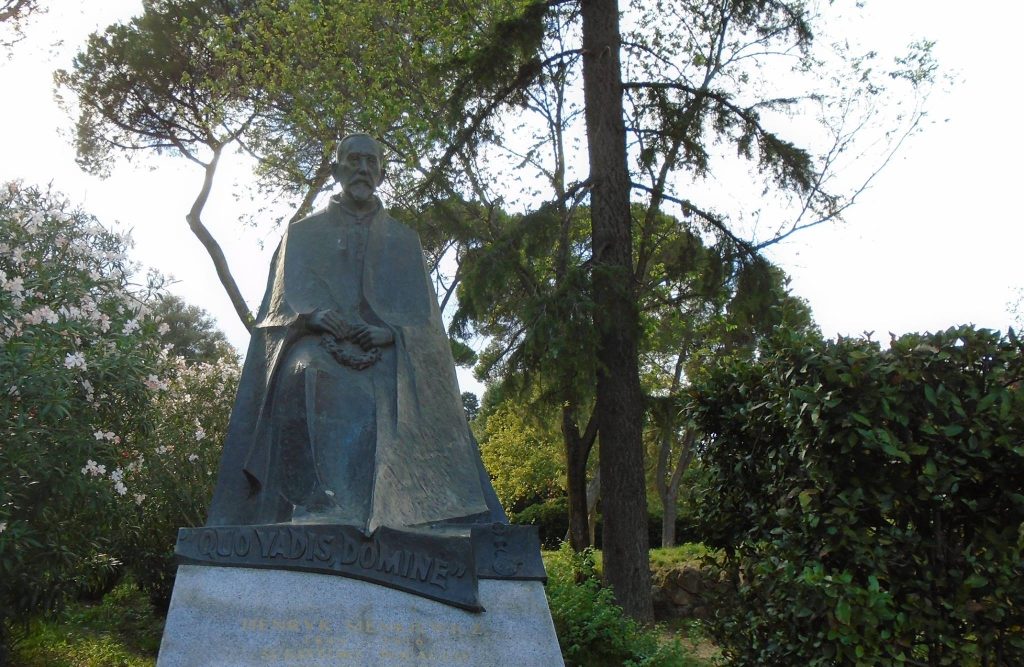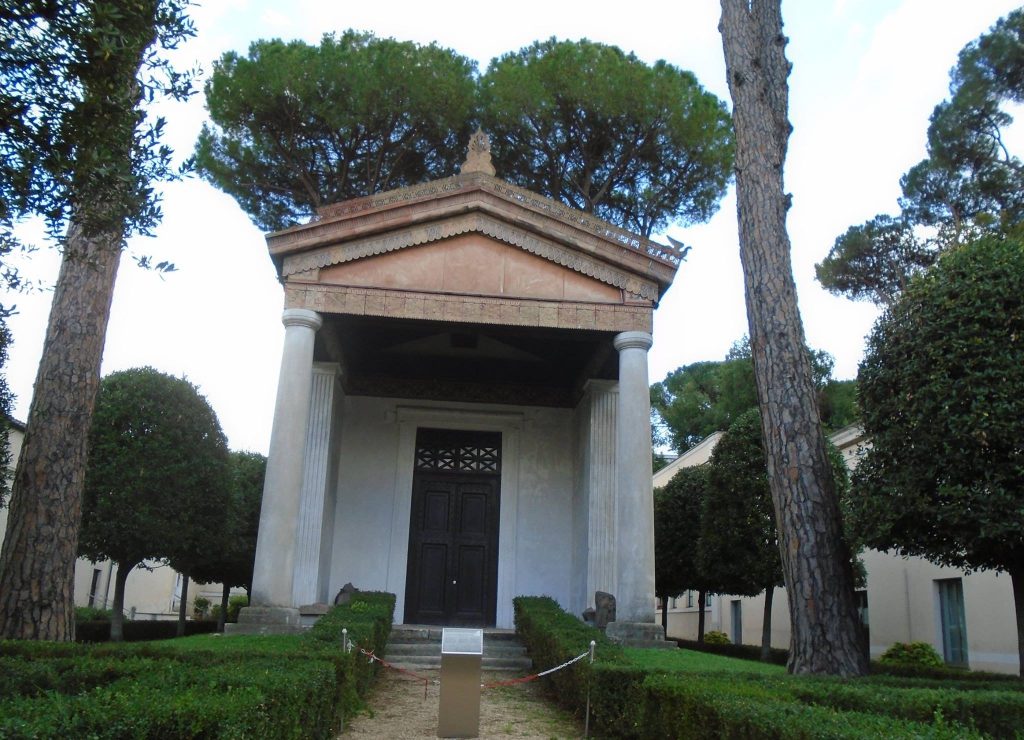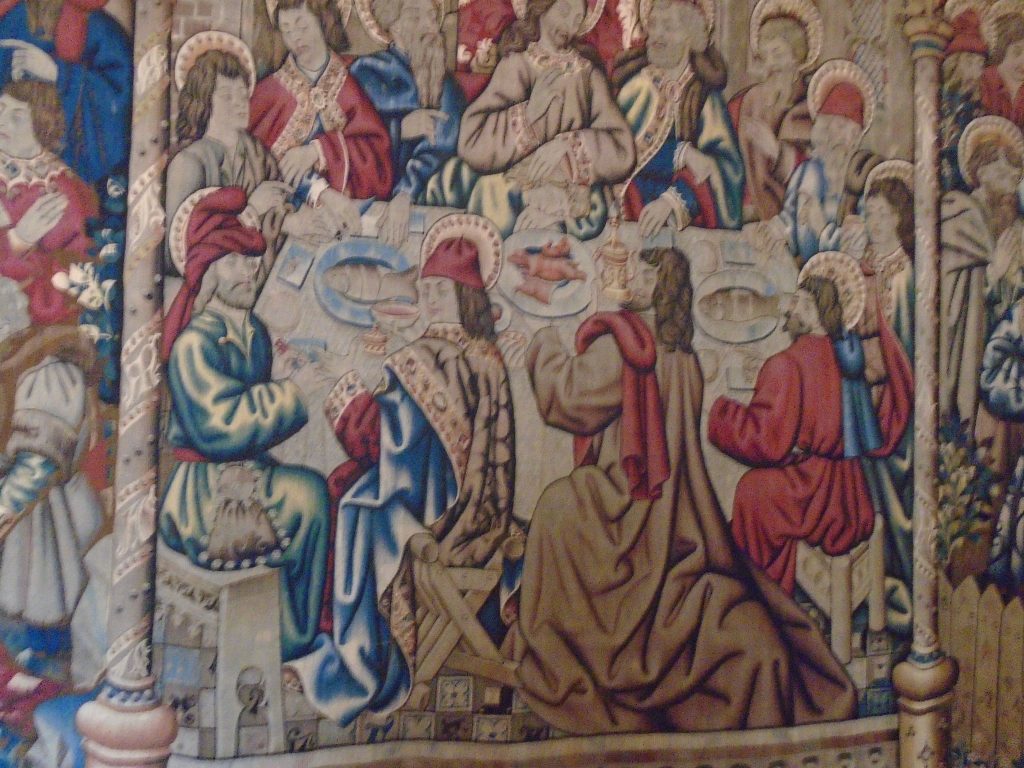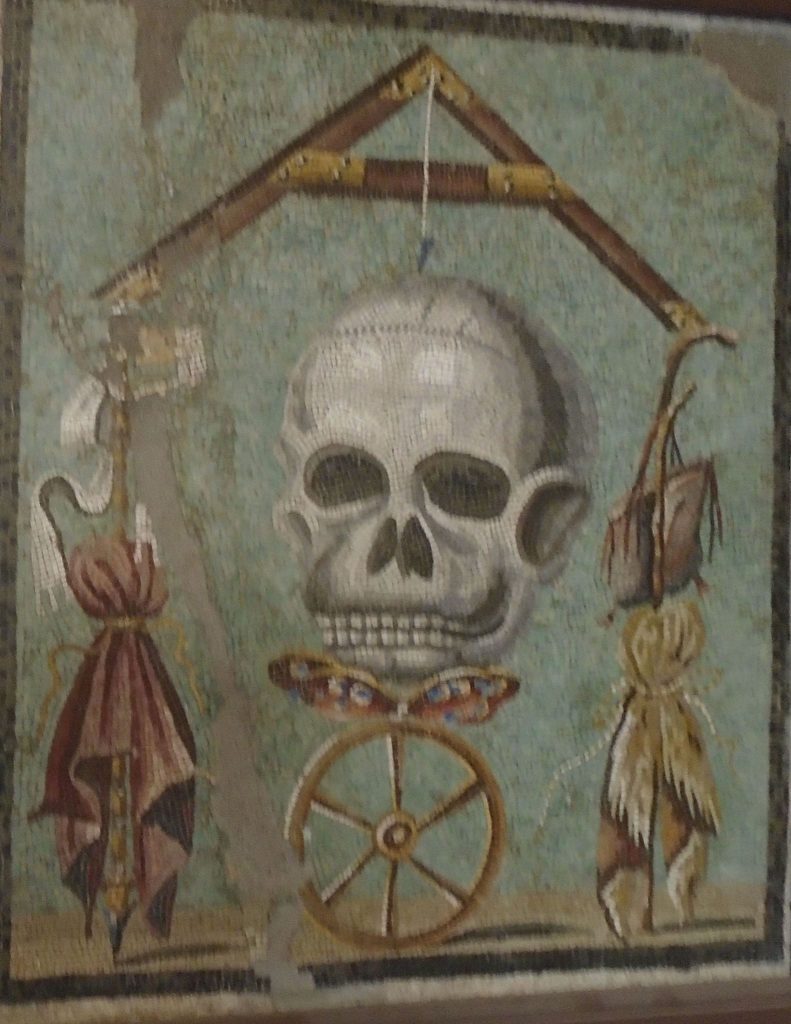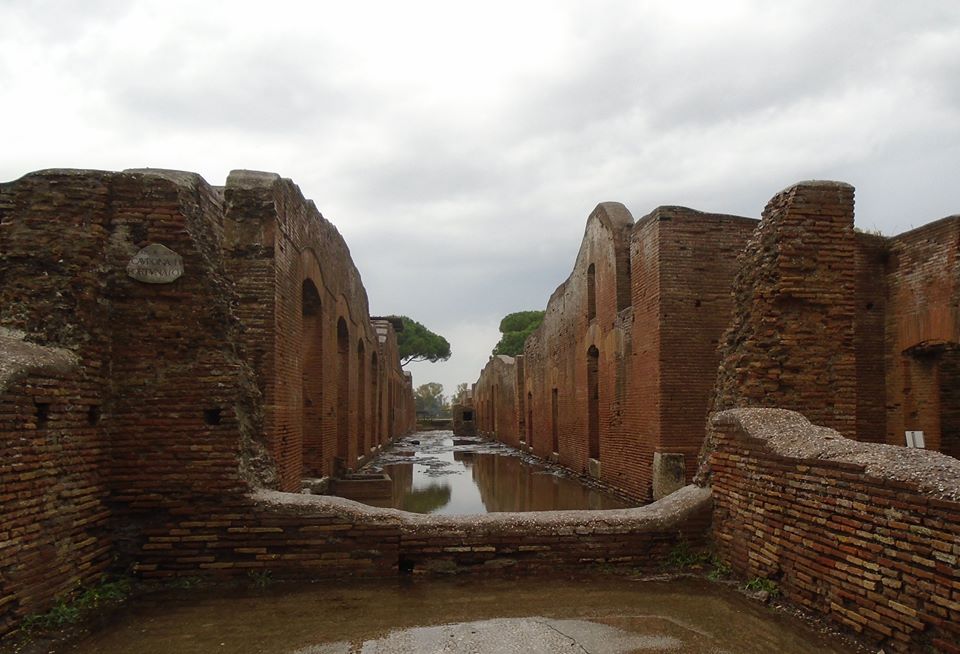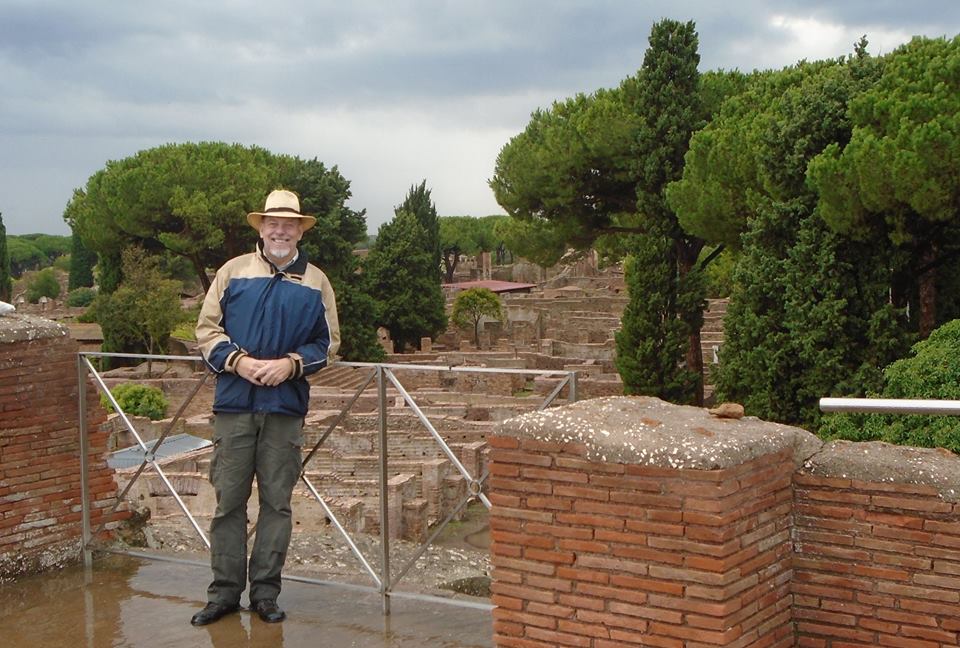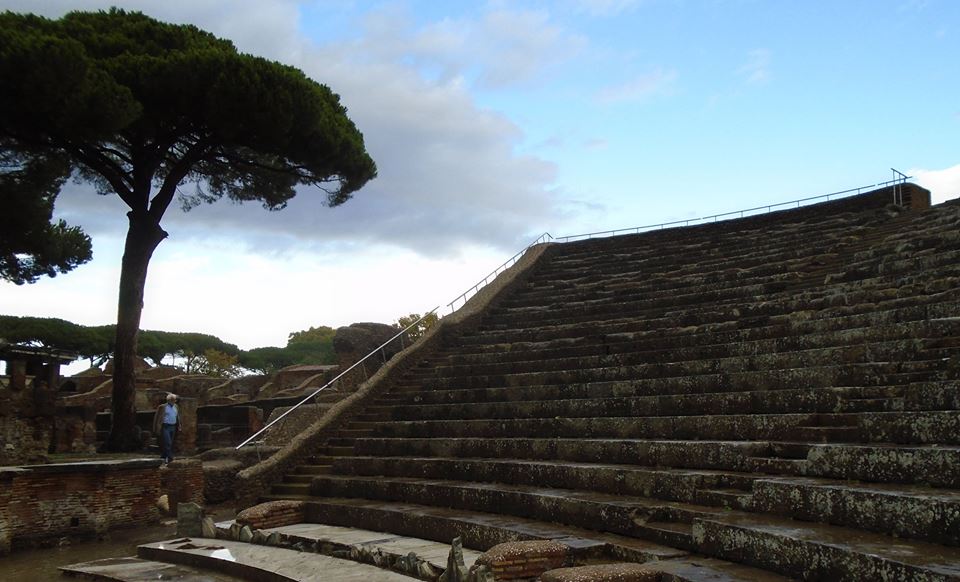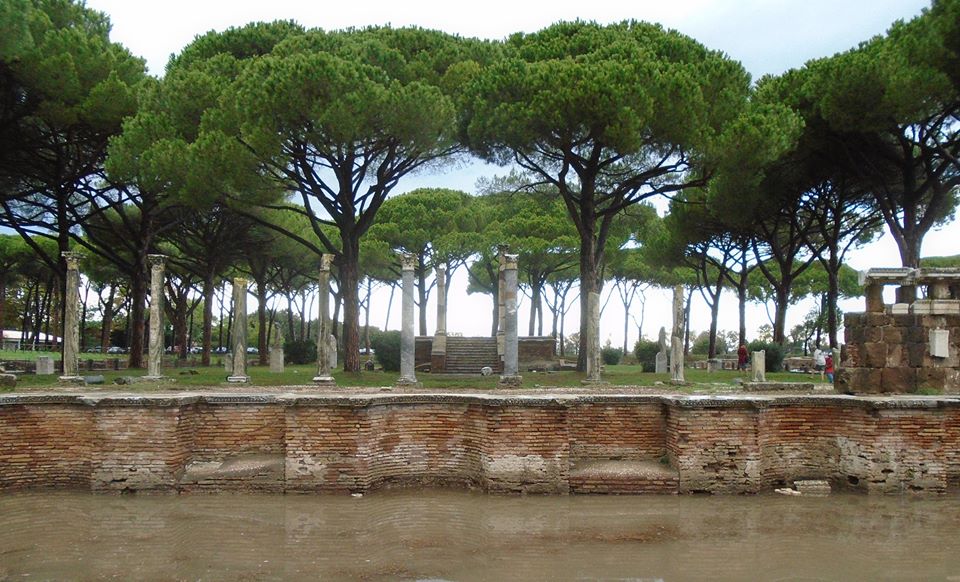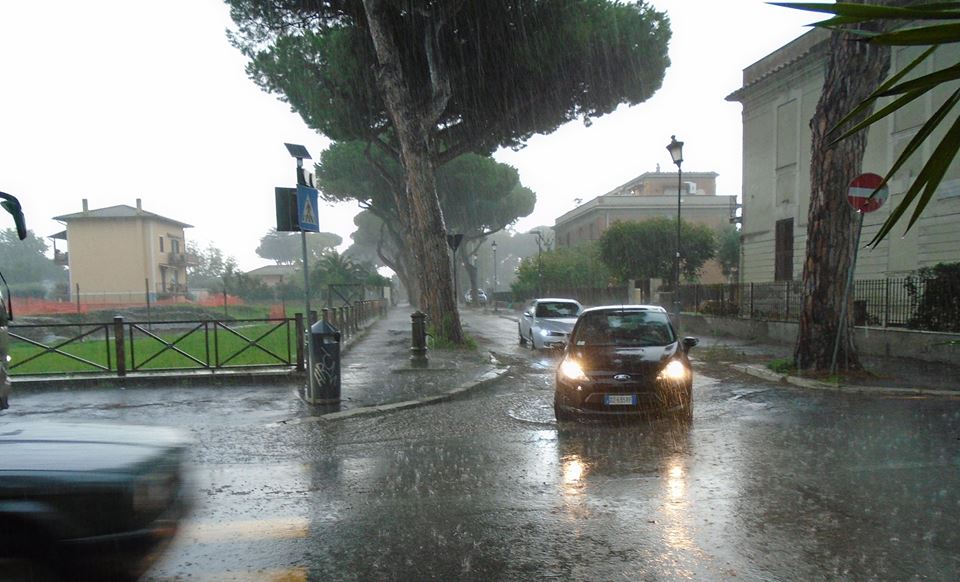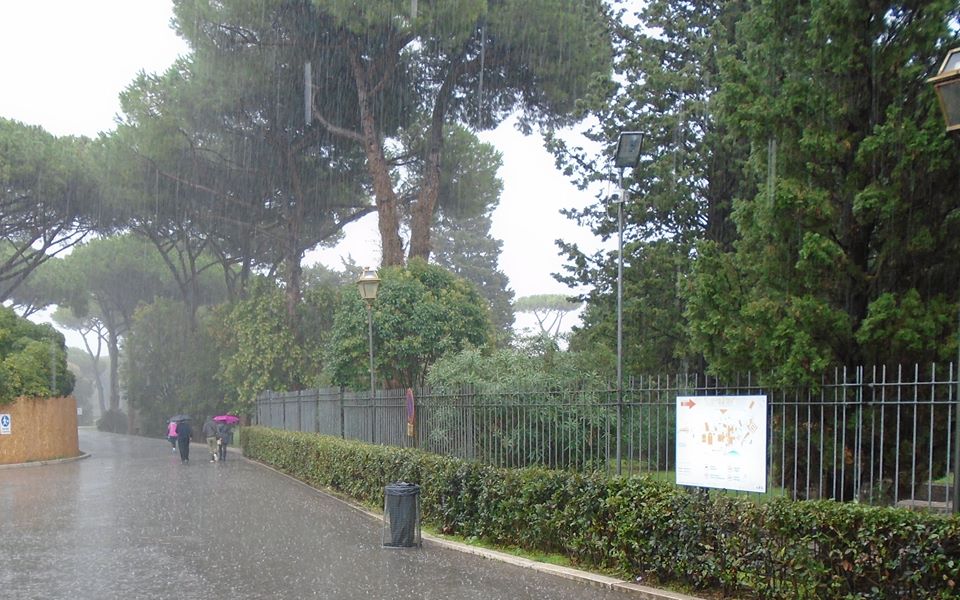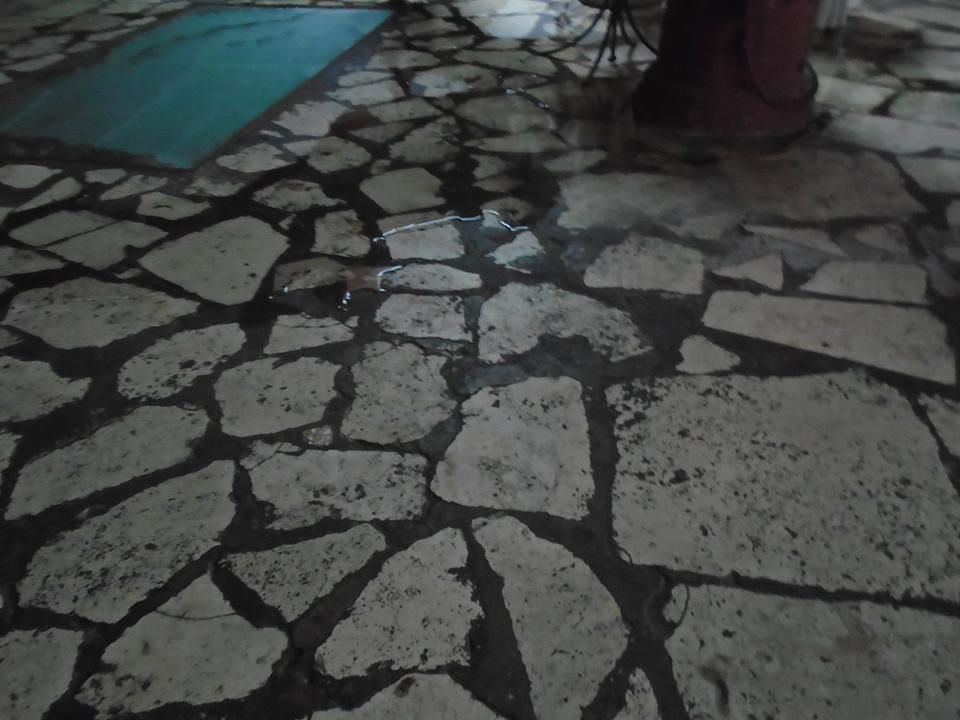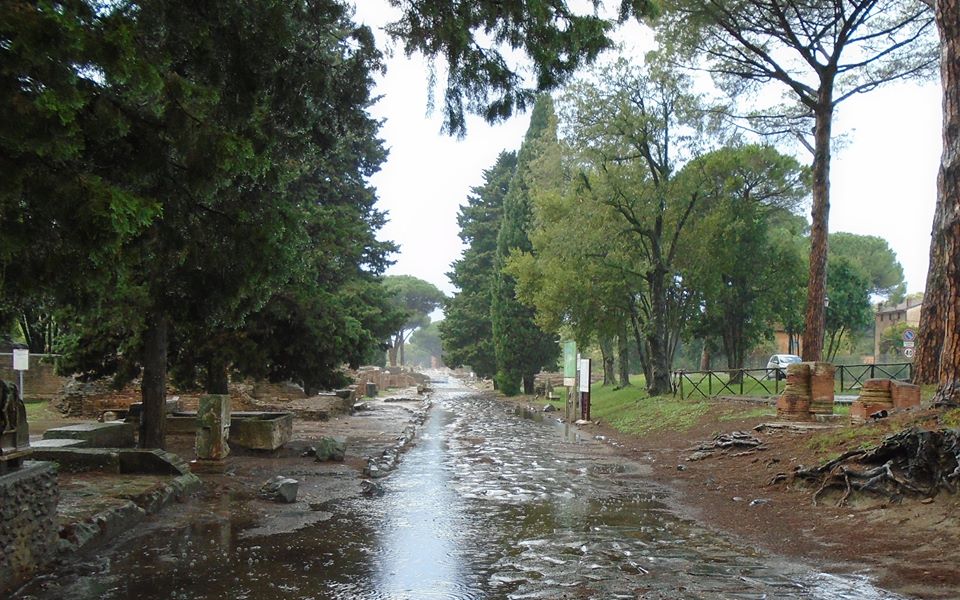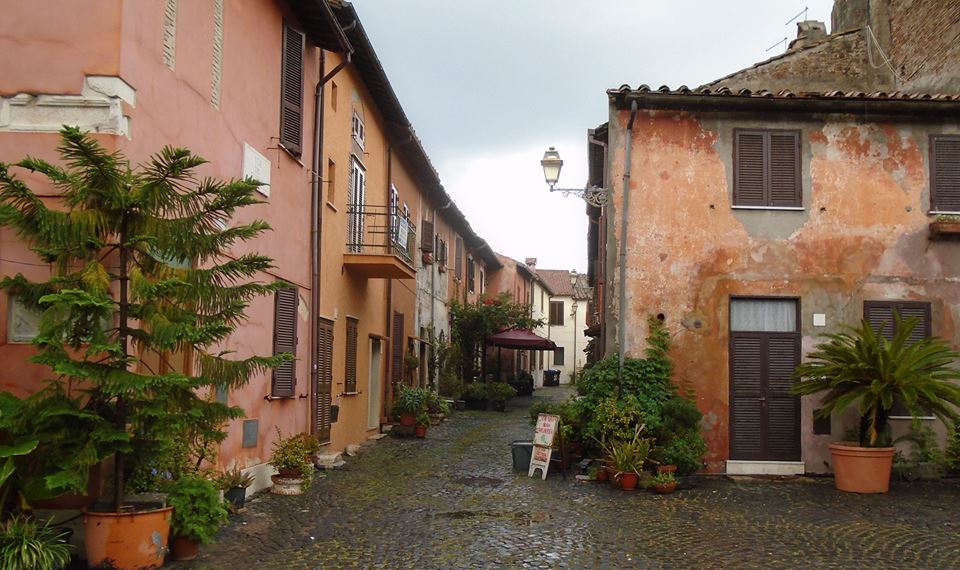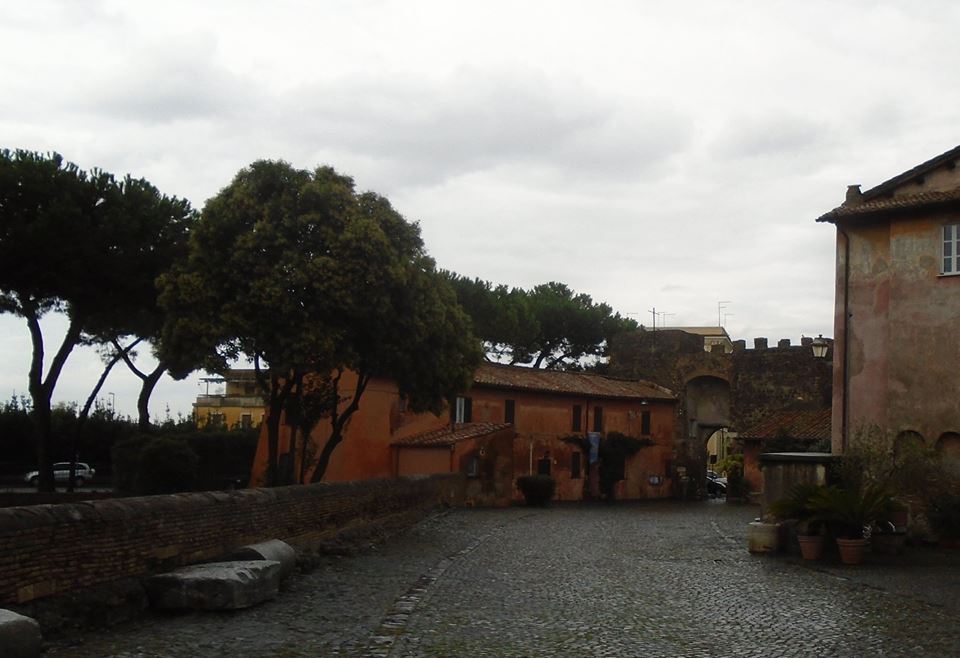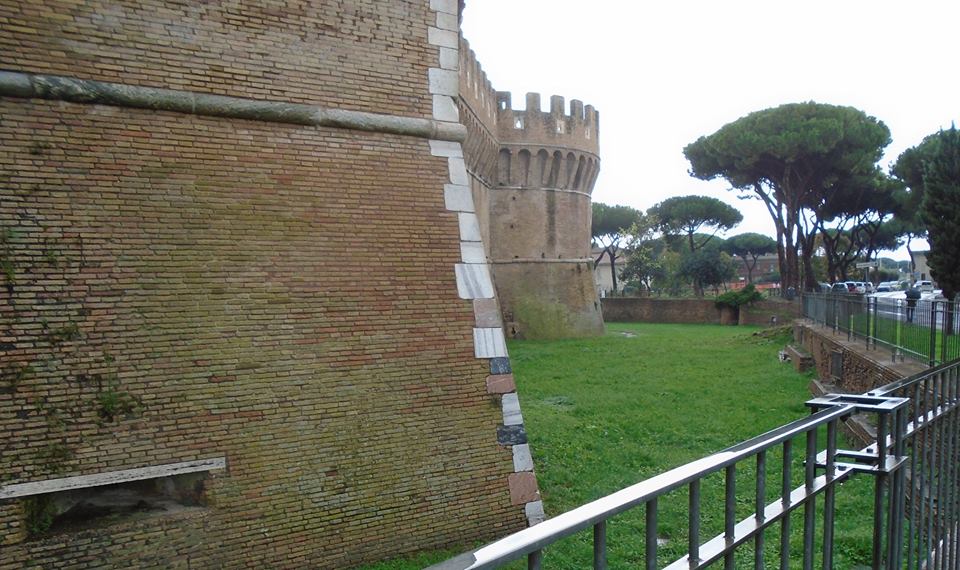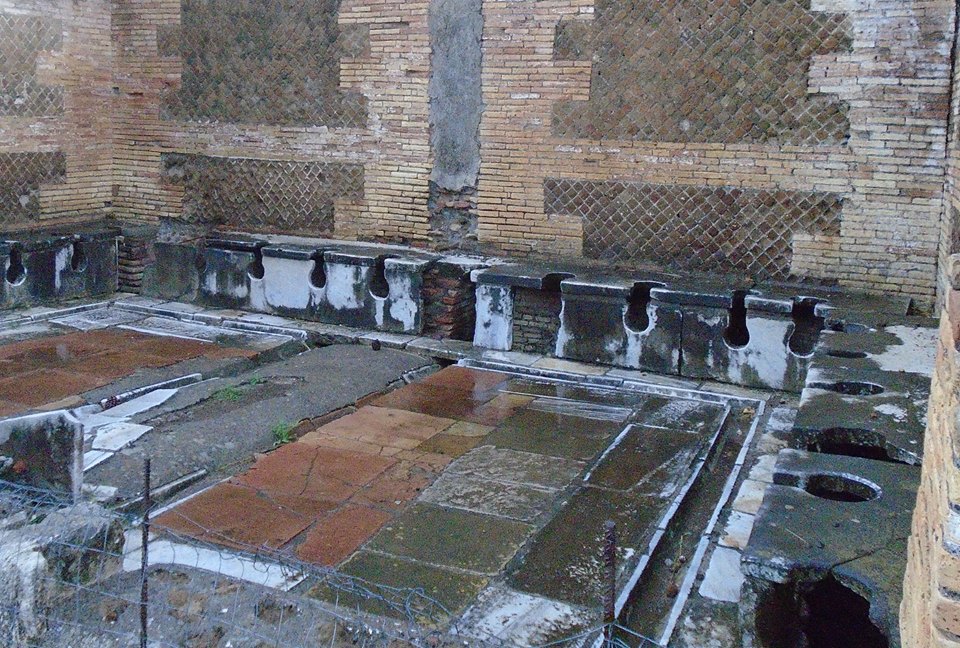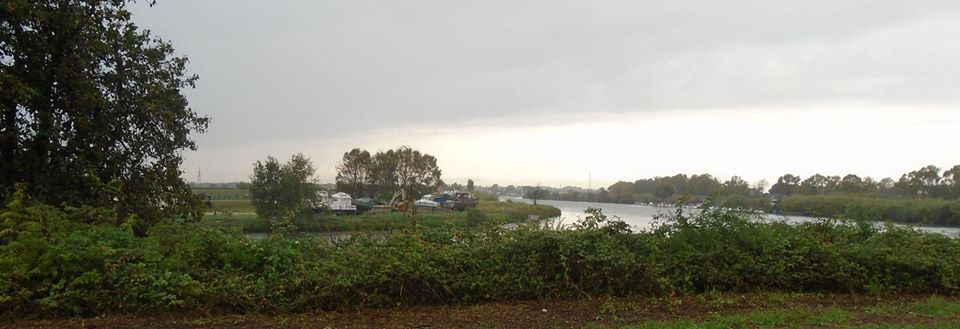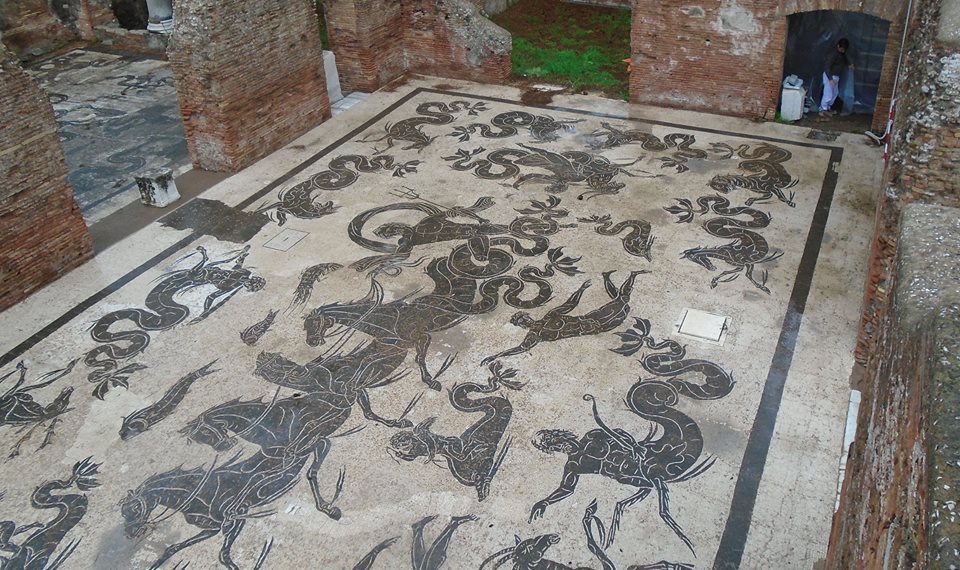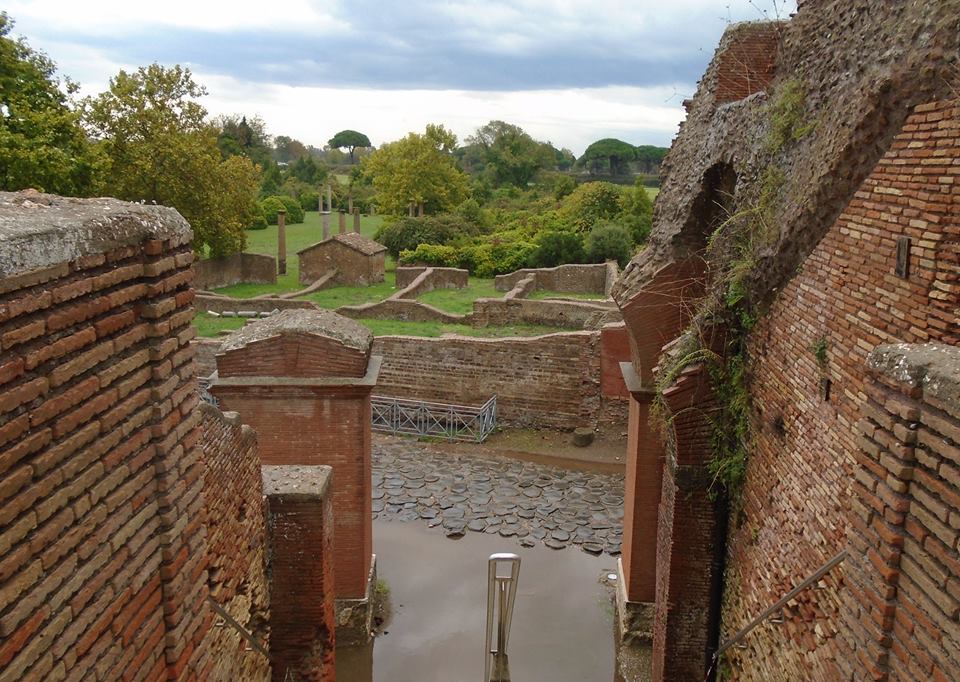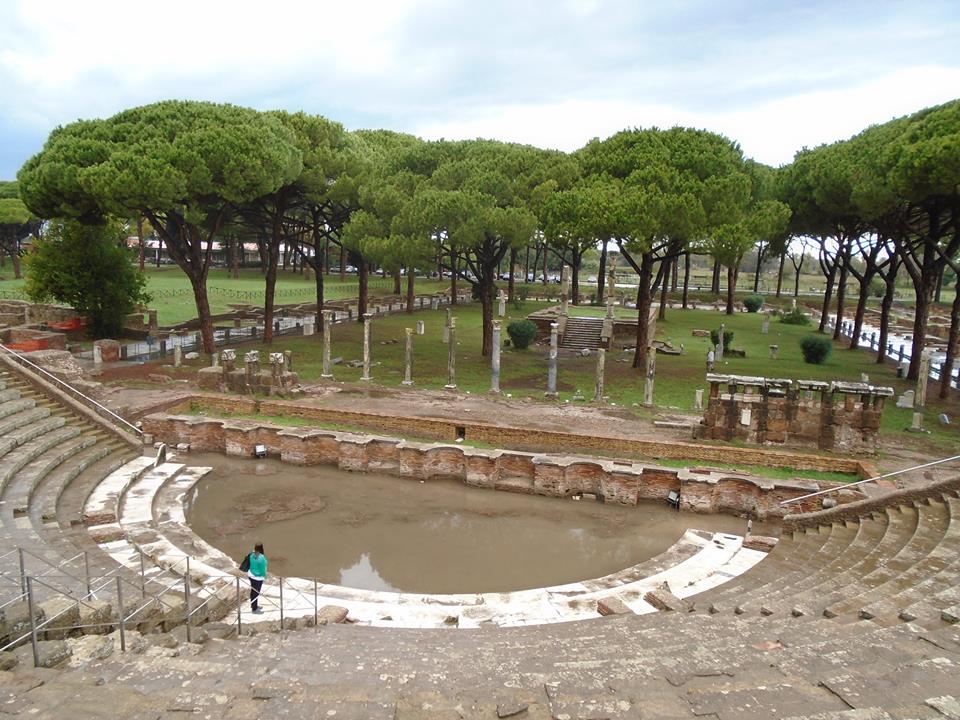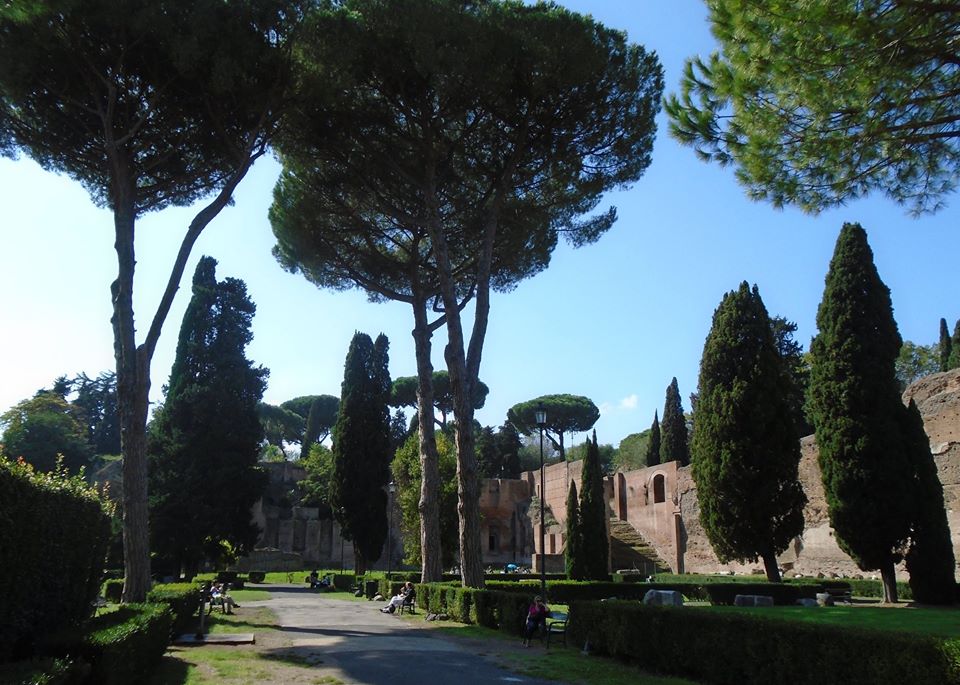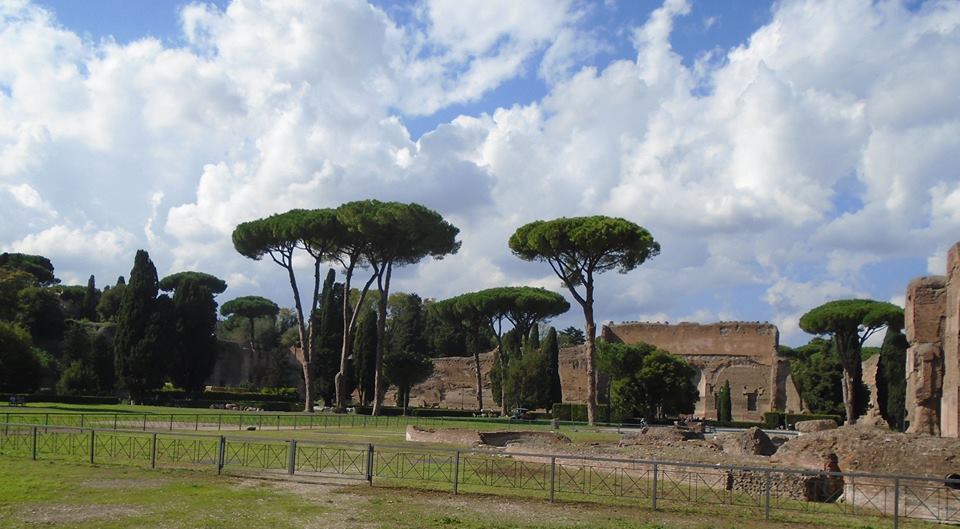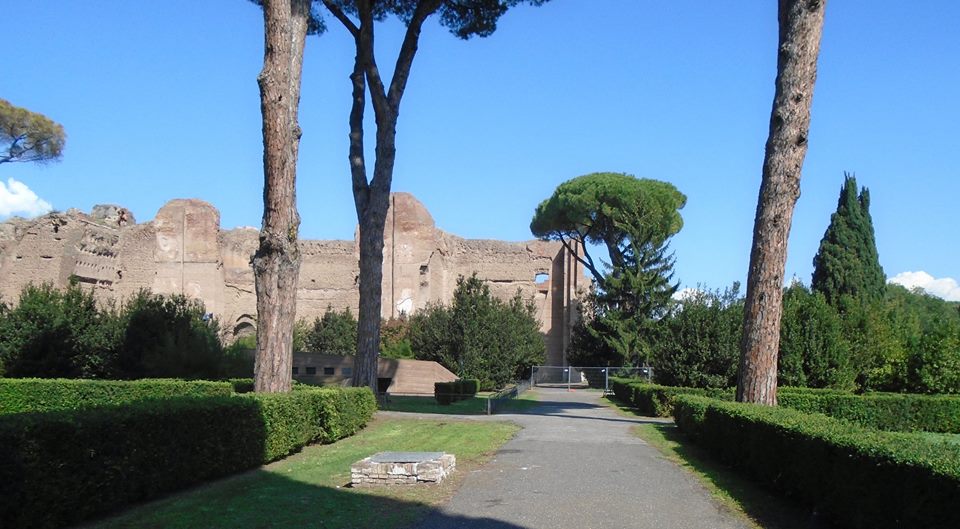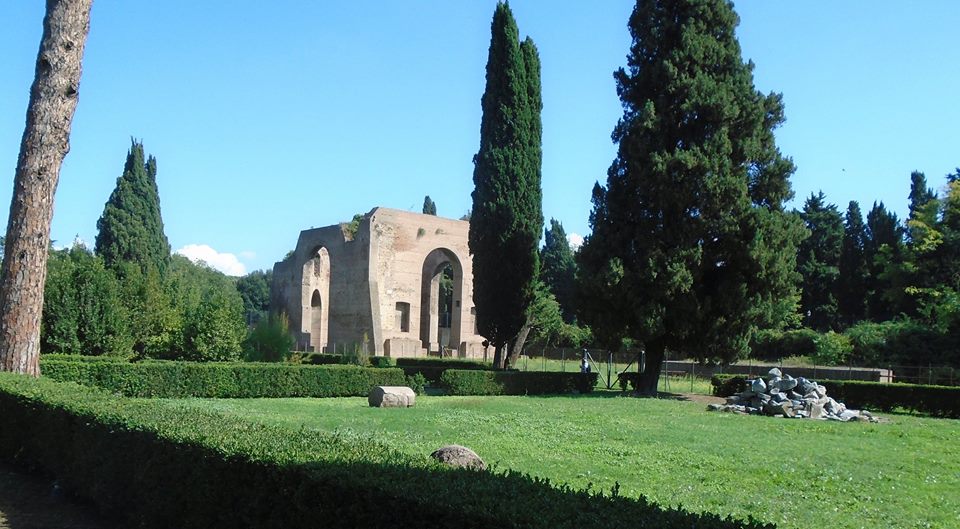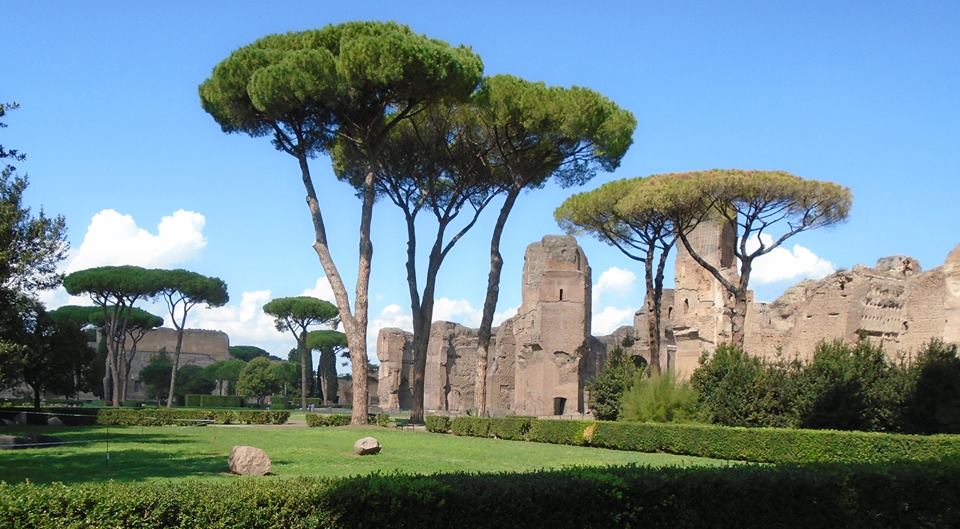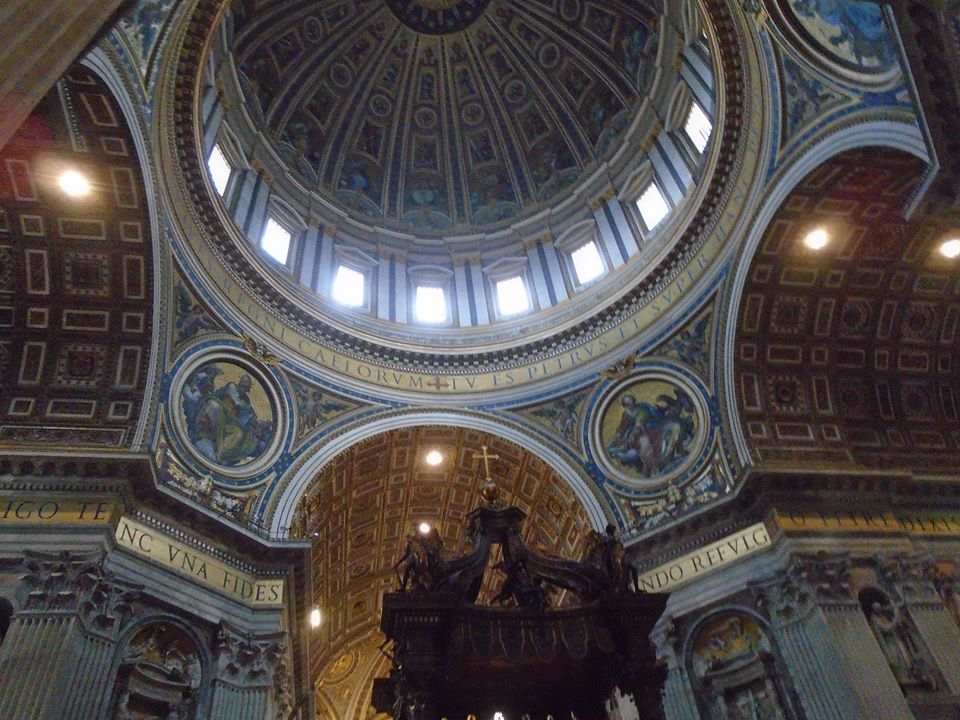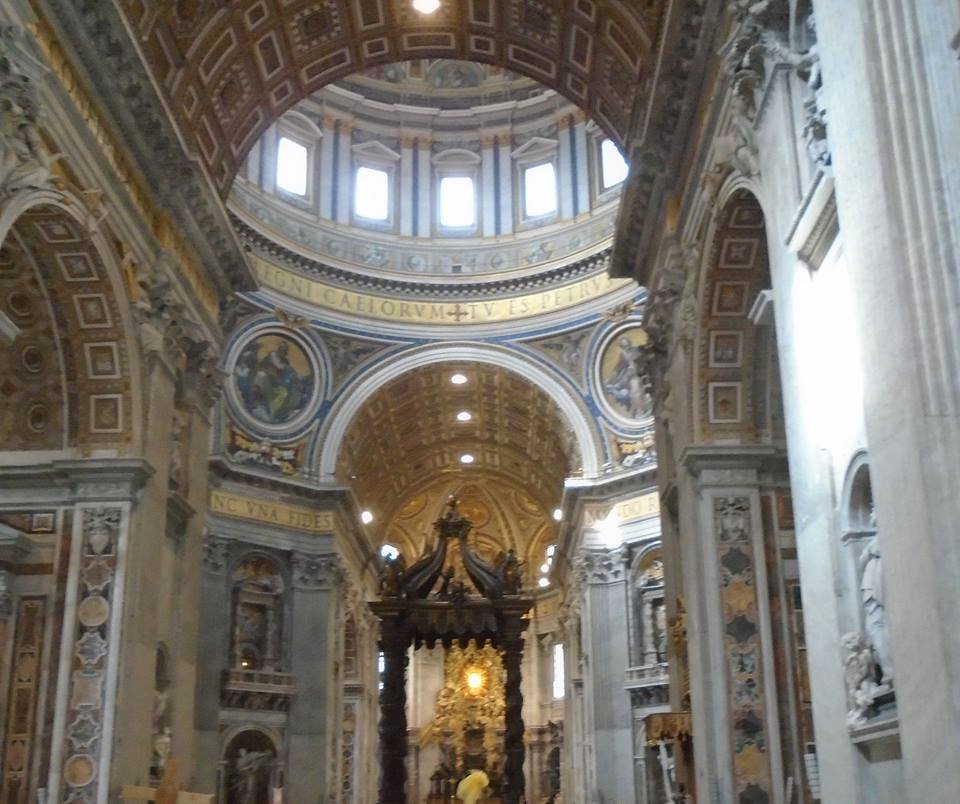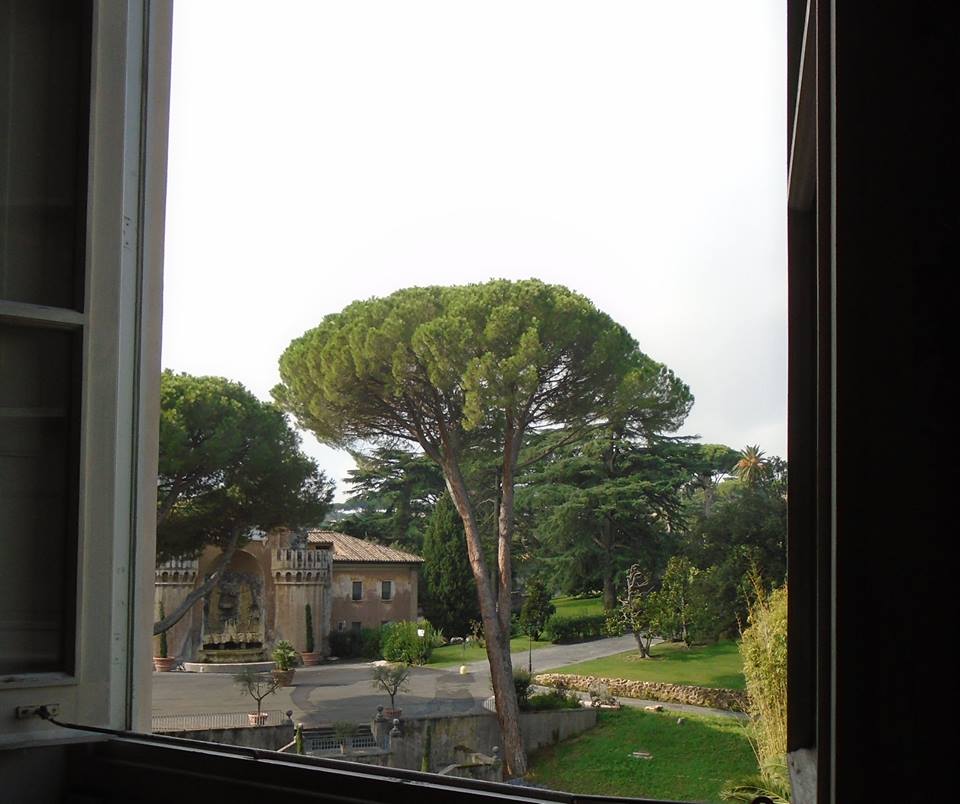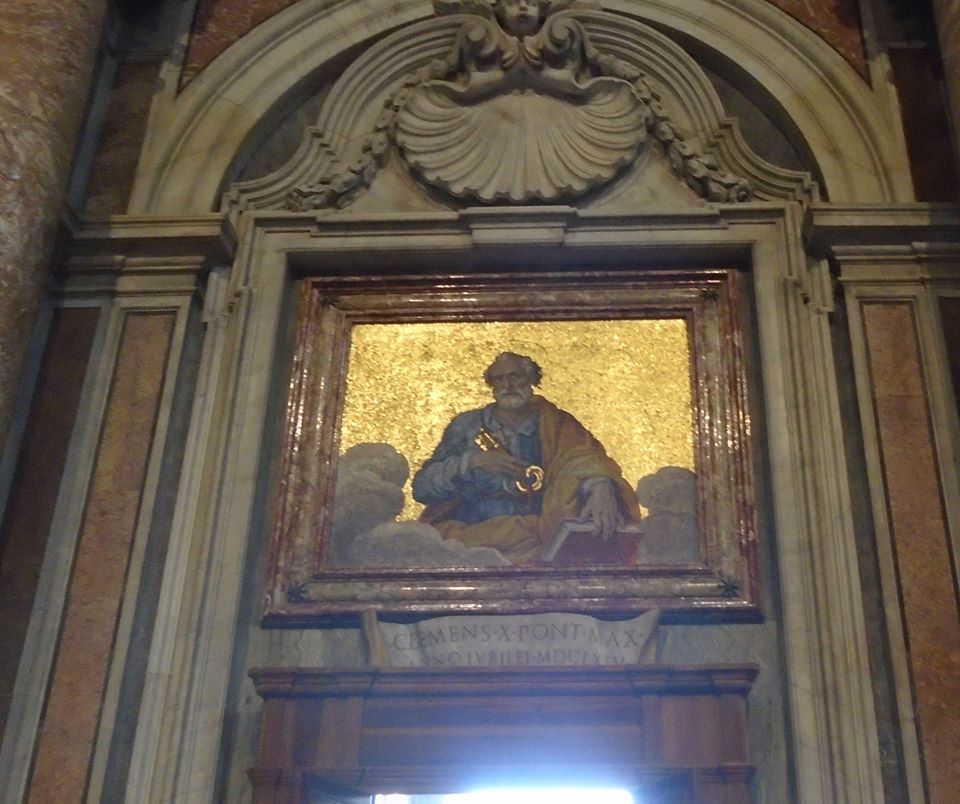For Mariza- they have a statue of Boomer at Vatican Museum. Who knew? The other picture is Apollo that was nearby. This is the most famous Apollo statue, thought to embody perfection. Looks okay.
Coming home
Travel is great and so is coming home. The flight back was tight, with almost zero leg room. The flight over was much better. Bigger plane. The plus side of being stuck on a plane for a long time is that you get an enforced time to think and there was a lot to think about after seeing so many ancient, interesting and beautiful things.
My strategy for coping with the boredom of long flights is to assign myself some reading and studying. I then procrastinate. Time always goes seems to race along when you are putting off something you are supposed to do. I channel the immense power of procrastination.
Anyway, I thought I would dump the last of my pictures from the Italy trip.
The first picture is Mithra. Mithra was a god of Persian origin. The religion became very popular in the Roman Empire, especially among soldiers. For a while it was a competitor to Christianity, but it had largely gone out of business by the end of the 4th Century.
The next photo is a statue of Henryk Sienkiewicz author of the novel “Quo Vadis.” He sits in the Villa Borghese. The book concerns and the title comes from the meeting of St. Peter and Jesus. St. Peter was leaving Rome along the Appian Way to avoid the persecution of Nero. He ran into Jesus coming the other way. Peter asked Jesus, “Quo vadis,” Latin for where are you going? Jesus answers that he is on his way to Rome to be crucified again. This gives Peter the courage to go back to Rome to be with the persecuted Christians. I will let you recall or look up how the story ends. A few movies have been made base on the book, which won the 1905 Nobel Prize for literature. Sienkiewicz’s other great work is his world famous … in Poland trilogy about 17th Century Poland. I was surprised to find him in an Italian park, so I took a picture.
Third is a reproduction of an Etruscan temple it is at the Villa Guilia.
Next is part of a tapestry in the Vatican, followed by a skull mosaic form the Archeological Museum in Naples. It is an interesting picture. It is like one featured in the introduction of the HBO series “Rome.” Last is Dante and his “Divine Comedy.” Dante straddles the period between the Middles Ages and the Renaissance, leaning a little more into the Middle Ages. He was the first major author who wrote in Italian, instead of Latin, and so is considered the father of the Italian language.
Ostia Antica
Ostia used to be the port of Rome and it used to be at the mouth of the Tiber River. I say “used to be” because it is neither today. The Tiber River moved after a big flood and silting pushed the coastline about four miles from the city.
The city did not suffer an immediate catastrophe, like Pompeii. It reached a peak population of around 100,000 in the third century and then went into a long decline. It was finally abandoned in the 9th Century, after repeated sacking by Arab pirates. It became a kind of ghost town, gradually getting covered up with dirt and silt. In later centuries, local builders plundered it for art and building materials.
It is odd today to think such things possible, that whole formerly large cities could just be abandoned, but this was fairly common in pre-modern times. Even great cities like Rome, Constantinople and Athens at times had large areas were where shepherds grazed sheep. These places came back. Of course, many ancient cities are now gone. Great coastal cities like Mycenae are now landlocked and empty. Petra attracts tourist but nobody lives there except to service them.
In Ostia you can see the old Roman form. It is like Pompeii in the straight streets, remains of temples, forum and baths. Roman colonial cities were laid out in grid pattern, like Roman military camps, which many of them started life. You can see the pattern in my first two photos. The second one was the street of bars and brothels. As a port city, Ostia hosted lots of seamen.
Next you see me standing in the water, overlooking the city. I was looking for, but could not find, a very similar picture of me from 2002 when I visited Rome with Alex. I still have the same coat. The old joke is that it is a bit short, but it will be longer before I get a new one. I was once passing through customs in Germany. My passport picture didn’t look so much like me, since I had lost some hair and grown a beard. The customs official was skeptical, but then he looked up and laughed. “Face changed but same tie,” he said and he was right. When it is not necessary to change it is necessary not to change.
The penultimate picture shows the theater and last is the view from the gallery. It was not a pool in those days, at least not usually.
Ostia rain
We enjoyed wonderful weather for the whole trip, except for a little rain yesterday and a lot of rain today. We visited Ostia Antica today. It was worth the visit. The rain was not as pleasant, but it did thin the crowds.
We took the bus from our hotel and got off into that rain you see in the first photo. We retreated into a nearby restaurant and were glad of the slow service. It is hard to see in the third photo, but water actually flowed across the floor. We hunkered down until the rain slowed, but it didn’t stop, as you see in the second picture. Chrissy had an umbrella and I had my Goretex coat, so we could proceed. The rain finally got only sporadic and we still got to see old Ostia.
Italian food
We stayed at the Ostia Antica Park Hotel. It is about as near to Ostia Antica as you can get and it looks walkable on the map. It is walkable. You just cannot walk in safety or comfort, since you have to walk along a busy narrow road with no shoulder and no path. We took the bus.
The hotel is good an very inexpensive. The staff is extraordinarily friendly, all of them. It rare to find such enthusiasm. If they are not sincere, they are very adept at faking sincerity.
In the restaurant today, we had our last Italian pizza. Among the choices, the one I chose, was sausage & potatoes. I had never before seen potatoes on a pizza and thought they meant tomatoes, but they meant potatoes. It is an odd, but not a bad combination. You get starch and starch. The pizza was generally good, one of the best we had.
I have been a little disappointed with the food this time. Let me be clear, food in Italy is great. But I remember it being superbly great (if I can double up on superlatives.) Now it is just great. I think what happened since I was here in 2002 is that food generally available in America has improved, so relative positions changed and my expectations have risen. My taste in food has change too. I used to eat mostly pasta and pizza. Today I like fresh vegetables and salads more and they are now more easily available in the U.S. Or more to the point, I know where to get it in the U.S. now.
My first photo shows the sausage and potato pizza. It looks like pineapple, which some people erroneously think goes on pizza, but its not. The other photos are from the little village near Ostia Antica ruins, very charming.
More from Ostia Antica
More from Ostia. The first photo shows the public toilets. It must have been odd to be sitting in rows like that doing your business. I suppose the men could encourage each other and compete to see who could be fastest and best. “Who does #2 work for?”
Next is the Tiber. This is the only part the still touches near the town. The third photo is one of the mosaics. They are being restored and cleaned, those that had not been plundered. Number four is another scene from the city and five is the amphitheater again.
Gardens at Caracalla
I like trees and so I appreciated the trees in the gardens at the Baths of Caracalla. Roman stone pines (or umbrella pines) are particularly impressive and lend themselves well to shading ground well below. The big trees have orange bark, while the younger ones seem to have darker bark. I cannot find references to this. I do know that ponderosa pines have a characteristic of darker bark until they are about a century old and then it turns orange, but I did learn that stone pines do not live very long (for trees) rarely more than 150 years. So, who knows?
Stone pines probably originated on the Iberian peninsula and were localized there, but Romans and other ancient people planted them all around the Mediterranean, and they are now naturalized in most places where the Romans once ruled.
Notice in the last photos the one pine is yellowing up top. They need more for the next generation.
Poles & siege of Vienna

Vatican museum features a large painting by Jan Matejko, whose work I got to know well during my time in Krakow. Jan Matejko lived in the 19th Century in Krakow. His specialty was massive works depicting great moments in Polish history. Painting in Vatican shows Jan III Sobieski, one of the greatest Polish kings and his victory over the Turks at Vienna.
It was September 1683. The Turks had pushed to the gates of Vienna and were successfully laying siege. The triumph of the jihad seemed assured with the Turks continuing their 300 year conquest of eastern and central Europe. But then the Polish army crossed the Danube under King Jan Sobieski. Soon the Turkish army was fleeing back toward Constantinople. Its expansion finished, a true turning point in history. Never again would Europe face this kind of existential threat.
So the Polish King Jan III Sobieski helped save Europe from conquest by the armies of Islam and Pope John Paul II (Jan Pavel) helps save Europe from Soviet communism. Is there something about the name John or being Polish?
A room with a view
We are staying at Courtyard Central Park in Rome, using my accumulated Marriott points. It is, as the name implies, up against a big park that stretches from here to the Vatican. We have a little balcony with a nice view, that you can see in the first picture. It is only three miles, but you really cannot walk, since the path is along a busy, twisty road.
Next picture is the pavement in the parking lot. I like how they do this in Europe. It lets the rainwater soak in and plants can grow in the lot. A problem with this in much of the U.S. is snow plows that would push up the bricks.
Next photo is St. Peter’s from closer up. It is similar to the U.S. Capitol. I suppose the U.S. Capitol is similar to it, since it was built sooner. Michelangelo designed the dome. That guy could do everything, an original Renaissance man.
Next is the tomb of Pope John Paul II, a great man. My Polish friends explained how important he was to the fall of communism. When he visited Poland in 1979, millions of people came to see him. The communist media downplayed the numbers and showed only old people. But the people knew and for the first time many knew that they were not alone in their opposition to Godless communism. Such events are hard to quantify, but they are inflection points in history.
Last is a picture of Angel Bridge going to Vatican. The newlywed couple on the bridge is street art. There are people, and in this case couples, who stand perfectly still, like statues. Sometimes you cannot easily tell that they are not statues. If you are sufficiently impressed, or just feeling charitable, you toss some money into their boxes or hats.
Through the Holy Door
Went through the Holy Door of Mercy at St Peter’s yesterday. The idea is that sins will be forgiven by walking through it. Let’s hope so. Pope Francis declared the door open last December. It door will close next month and may not open again until 2040. Authorities at Vatican expect a last minute rush.
My first picture shows the door. Next are views from the windows at Vatican and then the dome of St Peter’s.


